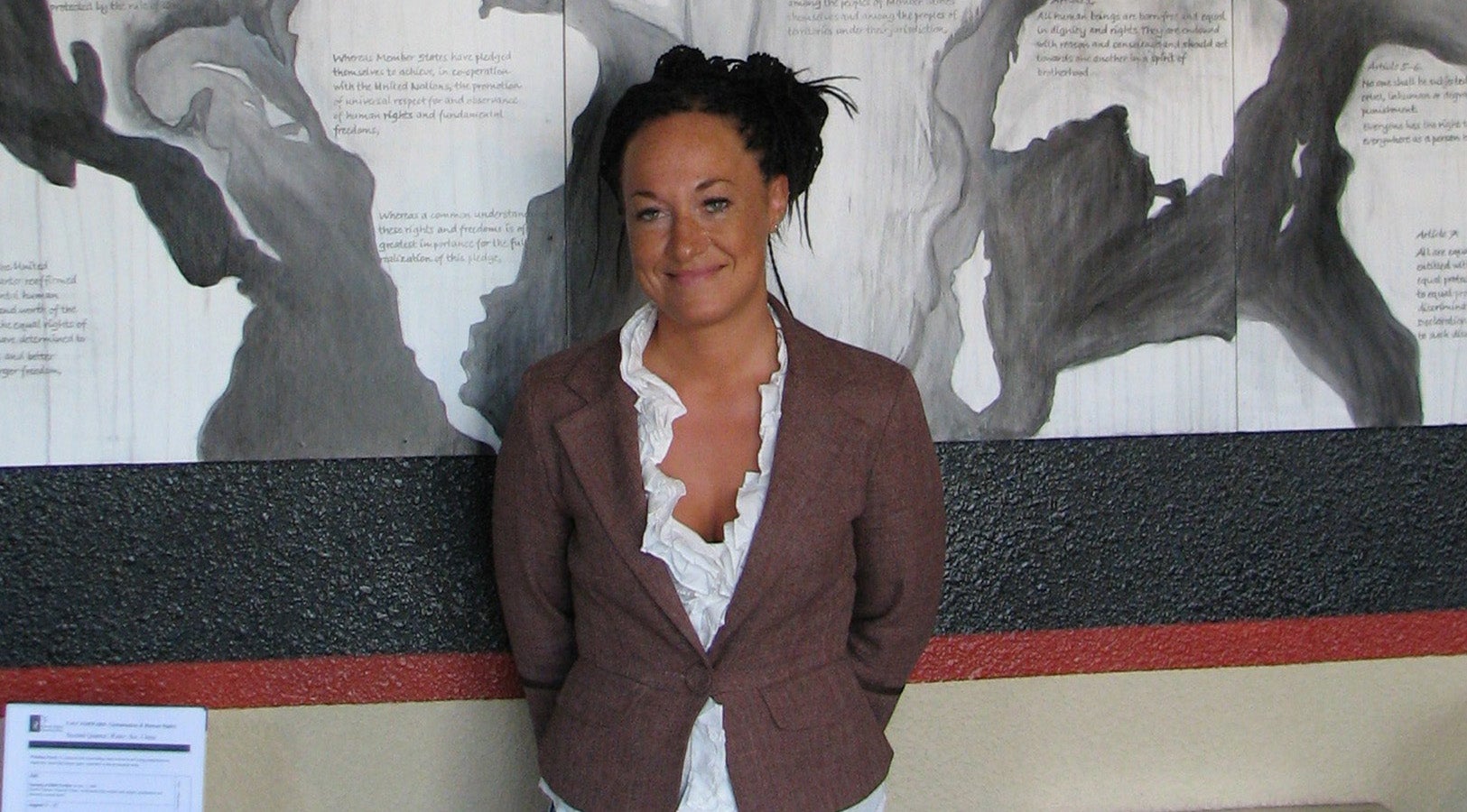To Rachel Dolezal: A white NAACP president could have been a powerful thing
Yesterday evening, news broke of allegations that Rachel Dolezal, president of the NAACP chapter in Spokane, Washington, has been passing for black for years. Unsurprisingly, the reaction—at least on Twitter—was a mixture of hilarity and mockery, with hashtags such as #AskRachel or #blackreceipts proliferating across social media.


Yesterday evening, news broke of allegations that Rachel Dolezal, president of the NAACP chapter in Spokane, Washington, has been passing for black for years. Unsurprisingly, the reaction—at least on Twitter—was a mixture of hilarity and mockery, with hashtags such as #AskRachel or #blackreceipts proliferating across social media.
It would be tempting to simply laugh at this woman, but perhaps a more productive use of everyone’s time—especially as we continue to parse the murky facts of this case—would be to take a moment to interrogate the themes of racial identity and allyship apparent here.
First, a bit of context. Whites passing as black for so long and so apparently well as Dolezal are relatively uncommon. Historically speaking, black people have always heard stories about very fair-skinned blacks passing for white. I had great cousins who decided to pass, move out west, and never speak to their “former” families again. At the time, passing made sense as a way to escape systemic oppression and attempt to be upwardly mobile.
The concept of performative blackness is not new, either. In the 19th century, white people donned blackface in order to dance, play music, do comedy, and perform a wide range of acts. At the time, shrouding one’s face in dark, theatrical make-up for a joke was considered normal. Rachel Dolezal, however, wasn’t looking for exploitative humor or cheap thrills. Her “performance,” assuming it was one, didn’t end when the curtains fell.
When questioned by Spokane Spokesman-Review about her race, Dolezal responded that the question of her race is “not as easy as it seems” and that she doesn’t “understand the question.”
As the facts remain murky, questions are about all we have for Dolezal.
According to Lawrence and Ruthanne Dolezal, a white couple from Montana who claim to be Rachel Dolezal’s parents, Rachel has always been passionate about family and social justice work, especially after her parents adopted two black children. She was involved in racial conciliation projects in her local community and even applied to Howard University to study art, where she received a full scholarship.
So was this an issue of passing, or did Dolezal become so invested in the black experience that she felt she needed to alter her identity to fit her passion? It has not been disclosed whether or not she has any kind of mental illness, but her accounts of having been the victim of both race-based hate crimes and her parents’ abuse are no laughing matter.
One has to wonder whether, deep down, Dolezal might have believed that race is something unfixed and amorphous, a construct created by society. In an age of increasingly fluid gender identities, are some people also beginning to believe they can change racial identities, too? Then there are the comments of those like beloved author Toni Morrison, who told Stephen Colbert last year that: ”There is no such thing as race. None. There is just a human race—scientifically, anthropologically.”
Ultimately, perhaps the biggest question is this: why would Dolezal think that she had to transform herself in order to be taken seriously by the black community?
She could have thought that no matter how much social justice work she did, her status as a white woman would always diminish her efforts. Perhaps she feared being excluded from a community that she not only respected but exalted. But her alleged deceit would not have been unnecessary—the NAACP has always been a multiracial coalition, something Dolezal should know from her earlier years as an advocate for reconciliation. Indeed, so far the NAACP has stood by Dolezal, noting in a statement that “racial identity is not a qualifying criteria or disqualifying standard for NAACP leadership” and that the group “stands behind Ms. Dolezal’s advocacy record.” But the way Dolezal seems to have manipulated the public, the NAACP, and the community would presume the exact opposite: that solidarity can only be achieved through homogeneity.
Self-hatred is a dangerous thing. In this case, it seems possible that Dolezal could have became so wrapped up in her own desire to belong that she became an inadvertent mockery of the very community she wanted so desperately to belong to.
But blackness should never be performed. It is not some abstract concept that can be morphed and shaped from foundation or elaborate extensions purchased from the beauty salon. It’s the skin that you wake up in the morning and go to sleep in at night. It’s the life experiences that cannot be absorbed through books or vicarious erudition. And no matter how much make-up you don, wigs you wear, or colloquialisms you speak, one cannot become black.
Again, as we await further information and corroboration, the questions we have for Dolezal today are almost entirely hypothetical. But her story does provide an opportunity for reflection. A white president of the Spokane NAACP chapter could have been an example of proud, interracial cooperation and mutual respect.
Now, her legacy may ultimately be that of a warning instead: the truth is always more powerful than a lie.